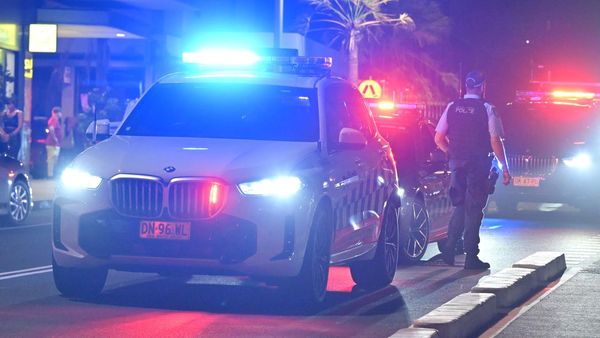
Well, that was an eventful four minutes.
SpaceX's huge Starship vehicle launched toward space for the first time ever today (April 20), rising into the sky from the company's Starbase facility in South Texas.
Starship didn't make it to the final frontier, however; its mission ended with a bang just under four minutes after liftoff, sending pieces of the stainless-steel craft raining into the Gulf of Mexico.
But this was no disaster, SpaceX stressed. The company wasn't expecting full success on the debut space launch, and it cheered the boxes that Starship managed to check. The giant rocket-spaceship combo cleared Starbase's launch tower, for example, and survived Max-Q, the point during launch when the stresses are highest on a vehicle.
"Congratulations to the entire SpaceX team on an exciting first integrated flight test of Starship!" the company tweeted shortly after the vehicle's "rapid unscheduled disassembly."
"With a test like this, success comes from what we learn, and today’s test will help us improve Starship's reliability as SpaceX seeks to make life multi-planetary," it added in another tweet.
Related: Relive SpaceX's explosive 1st Starship test flight in these incredible launch photos

There's no point in speculating about what caused today's test flight to come to such a dramatic end; SpaceX is analyzing the data and will let us know what the investigation determines.
But it is worthwhile to highlight some of the milestones that Starship notched today, as well as the moments that didn't go according to plan.
The biggest success was getting aloft at all. Starship climbed high into the South Texas sky, achieving a maximum altitude of about 24 miles (39 kilometers), according to the data tracker SpaceX provided during its launch webcast.
A failure on the pad today would have been a serious letdown — especially if it resulted in an explosion that destroyed Starbase's gigantic orbital launch tower. That was likely the one outcome SpaceX hoped to avoid, as it would have set back their operations at the South Texas site considerably.
"To get this far is, honestly, amazing," SpaceX's Kate Tice said during the launch webcast today. "Everything after clearing the tower was icing on the cake."
And clearing the tower is quite an involved process. Not only do Starship's 33 first-stage Raptor engines — or a high percentage of them, anyway (see below) — have to operate normally, so does all of the tower hardware.
"Everything released," SpaceX's John Insprucker said during the launch webcast. "The hold-downs, the quick-disconnect arms — everything move[d] out of the way" according to plan.
Starship's first-stage booster, known as Super Heavy, didn't fire on all cylinders during the launch, however. Three of its 33 Raptors apparently didn't light up at liftoff, and two more conked out during the brief flight.
Still, the power of 28 Raptors got Starship high into the sky. There was a brief, bright flash from those engines about 33 seconds into the flight, though it's unclear if this indicated anything off-nominal. Starship kept climbing and made it through the Max-Q gauntlet in one piece at around T+80 seconds, eliciting cheers from SpaceX headquarters in Hawthorne, California, where employees had gathered en masse to watch the liftoff.
The next big milestones were supposed to occur back to back to back just under three minutes after liftoff: Super Heavy engine shutdown, followed by stage separation and the lighting of the upper-stage vehicle's six Raptor engines.
But this is where Starship faltered. The vehicle appeared to start performing a prescribed flip ahead of stage separation, Insprucker said during the webcast. But Super Heavy's engines continued to burn and the vehicle began to tumble, sparking moans of concern from the crowd at SpaceX HQ.
Stage separation never came. And Super Heavy's engines appeared to keep firing long past the targeted cutoff point, which was two minutes and 49 seconds after liftoff.
The full-stack Starship kept tumbling for another minute or so before exploding three minutes and 59 seconds after launch, likely because SpaceX activated the vehicle's flight termination system at this point.
As noted above, we should learn more soon about why Starship met an explosive end today. And it probably won't be long before another Starship takes to the South Texas skies.
"Congrats @SpaceX team on an exciting test launch of Starship! Learned a lot for next test launch in a few months," company founder and CEO Elon Musk tweeted today.
Mike Wall is the author of "Out There" (Grand Central Publishing, 2018; illustrated by Karl Tate), a book about the search for alien life. Follow him on Twitter @michaeldwall. Follow us on Twitter @Spacedotcom or Facebook.







